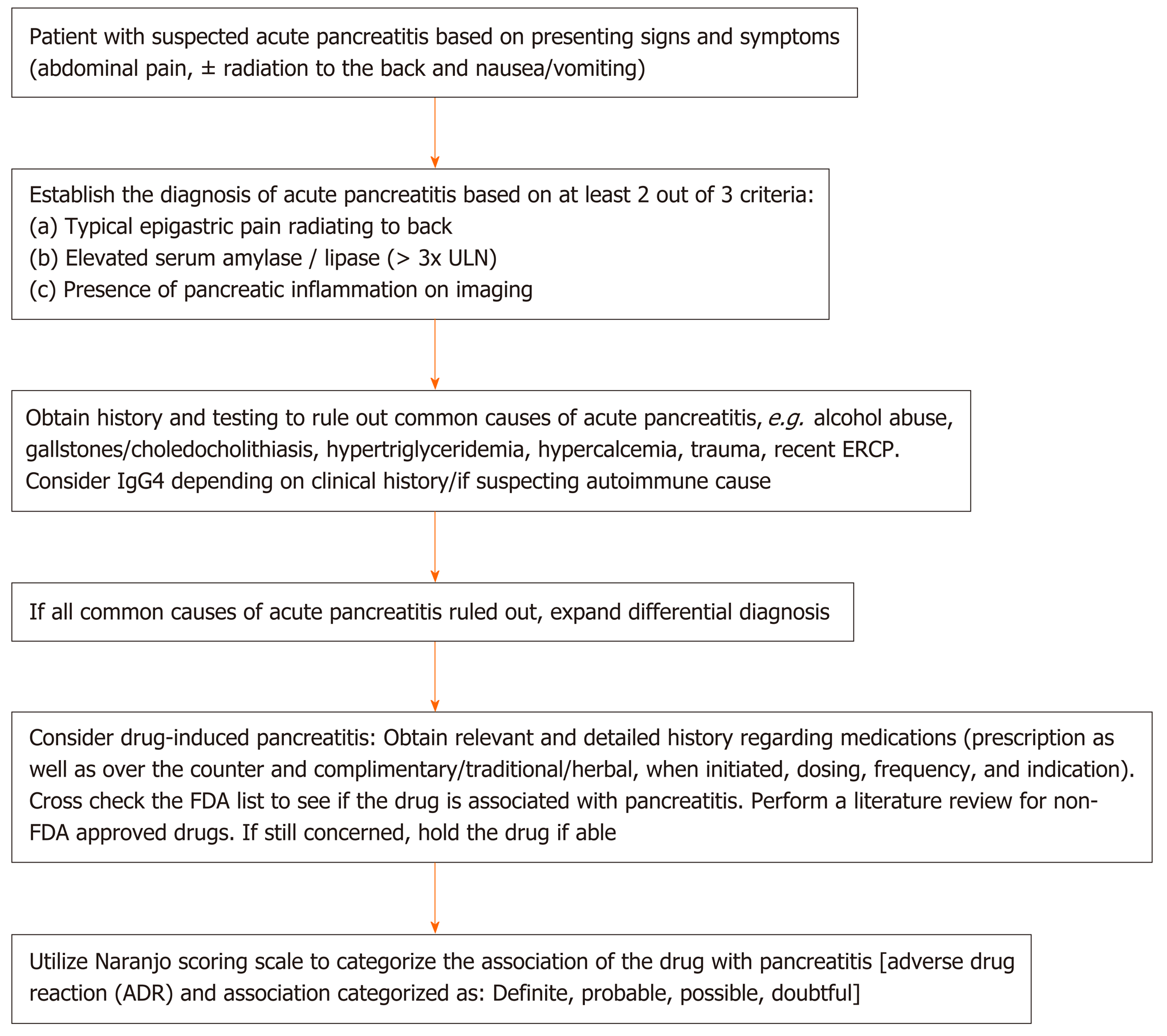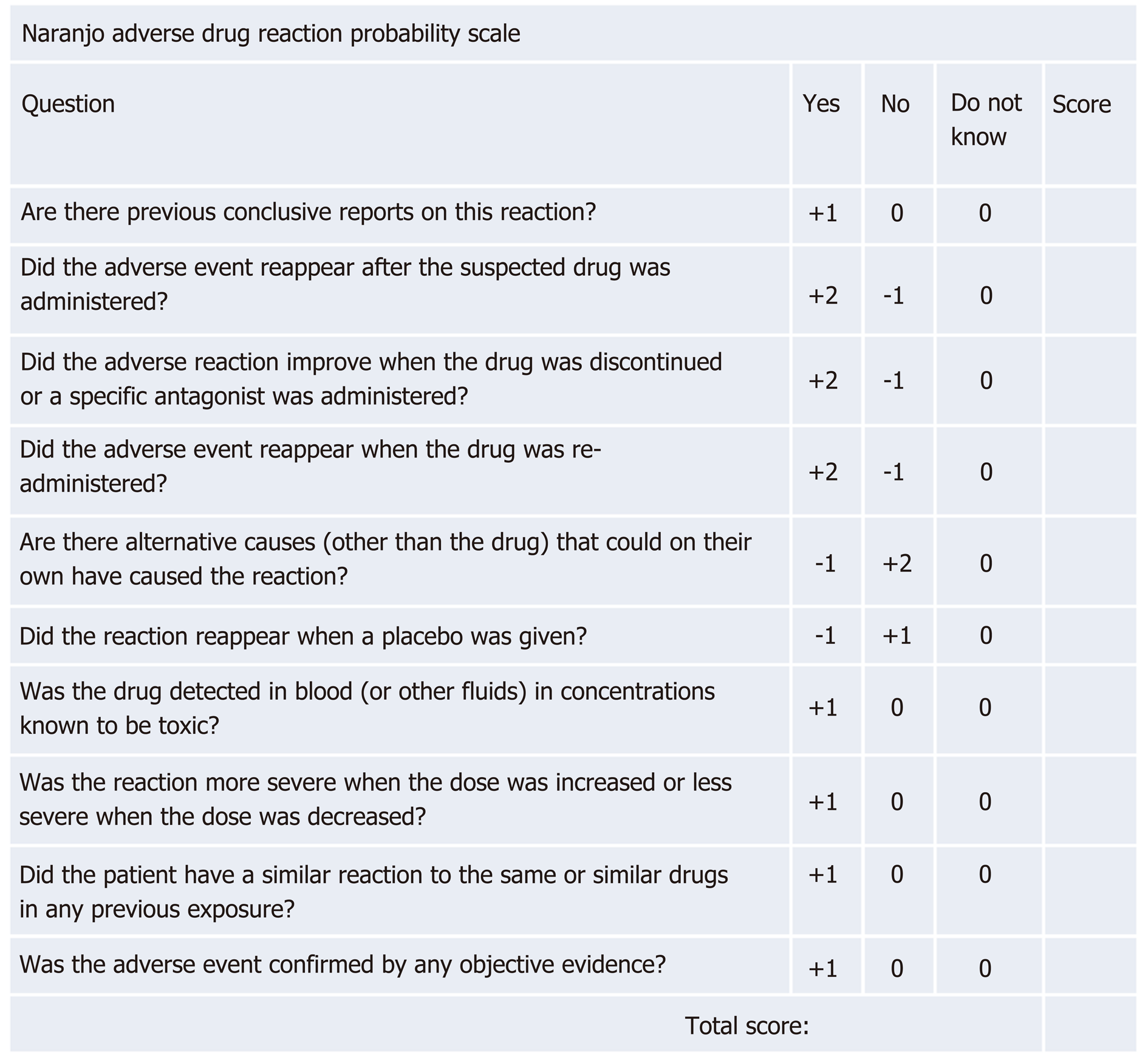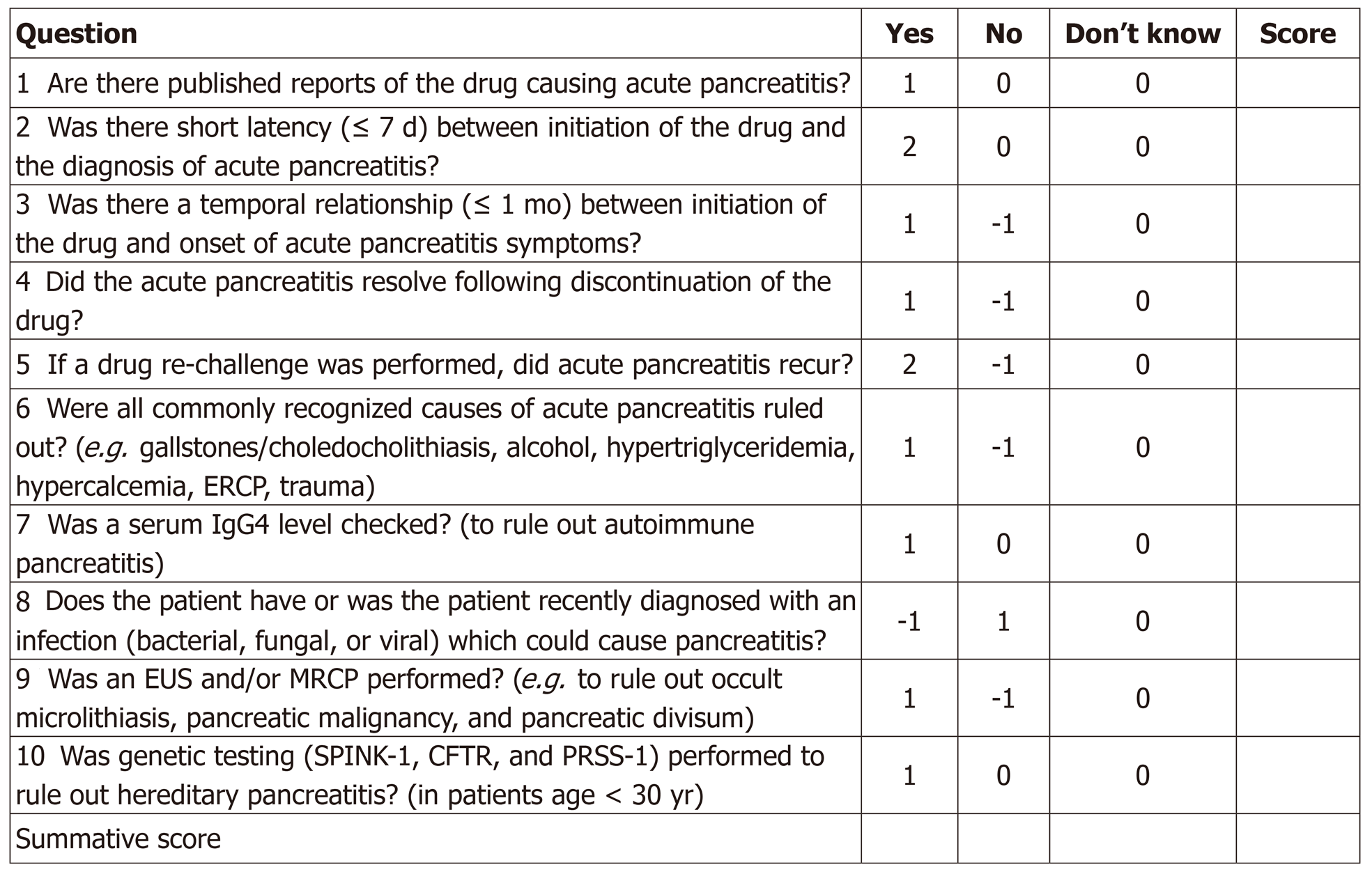Copyright
©The Author(s) 2020.
World J Gastroenterol. Jun 14, 2020; 26(22): 2902-2915
Published online Jun 14, 2020. doi: 10.3748/wjg.v26.i22.2902
Published online Jun 14, 2020. doi: 10.3748/wjg.v26.i22.2902
Figure 1 Flow diagram to help identify the potential cause of acute pancreatitis, including cases of drug-induced pancreatitis.
ERCP: Endoscopic retrograde cholangiopancreatography; FDA: Food and Drug Administration.
Figure 2 The Naranjo adverse drug reaction probability scale[17].
Figure 3 Proposed drug-induced pancreatitis probability assessment scale in which a total summative score of > 9: highly probable, 6-8: probable, 3-5: possible, and ≤ 2: doubtful.
ERCP: Endoscopic retrograde cholangiopancreatography; EUS: Endoscopic ultrasound; MRCP: Magnetic resonance cholangiopancreatography.
Figure 4 The proposed mechanisms leading to pancreatic insult in drug-induced pancreatitis.
- Citation: Weissman S, Aziz M, Perumpail RB, Mehta TI, Patel R, Tabibian JH. Ever-increasing diversity of drug-induced pancreatitis. World J Gastroenterol 2020; 26(22): 2902-2915
- URL: https://www.wjgnet.com/1007-9327/full/v26/i22/2902.htm
- DOI: https://dx.doi.org/10.3748/wjg.v26.i22.2902
















